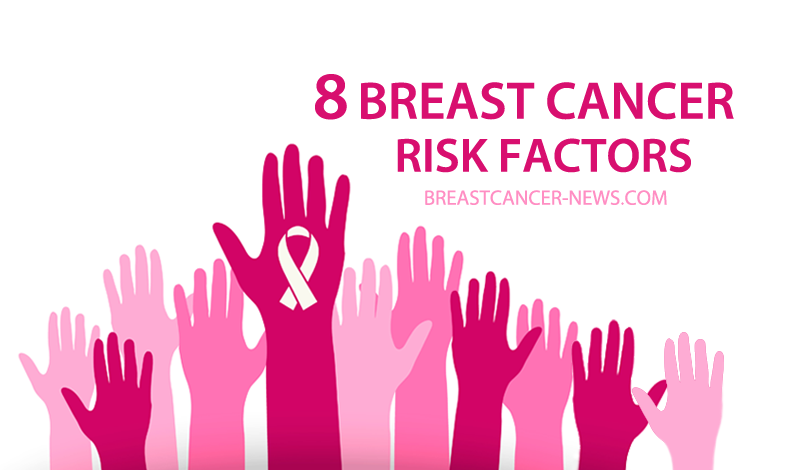Breast cancer is a malignant disease characterized by the out-of-control growth of breast cells. The breast includes three parts, which are the glands that produce milk, the ducts that transport milk to the nipple, and the connective tissue that consists of fibrous and fatty tissue that connects everything together. Patients may develop cancer in different parts of the breast, with symptoms that may include breast lumps or masses, swelling in all or part of the breast, skin irritation or dimpling, breast or nipple pain, nipple retraction, nipple discharge other than breast milk, or redness, scaliness, or thickening of the nipple or breast skin.
1. Gender and Age: Both men and women can suffer from breast cancer, but women are about 100 times more likely to develop it than men, according to the American Cancer Society. Also, woman’s risk of developing breast cancer increases with age. The society estimates that about 1 in every 8 invasive breast cancers occur in women younger than 45, while about 2 in every 3 invasive breast cancers are found in women 55 years or older.
2. Genetics: “About 5% to 10% of breast cancer cases are thought to be hereditary, meaning that they result directly from gene defects inherited from a parent,” the American Cancer Society says. “In normal cells, these genes help prevent cancer by making proteins that keep the cells from growing abnormally. If you have inherited a mutated copy of either gene from a parent, you have a high risk of developing breast cancer during your lifetime.” (Read more about genetics as a risk factor)
3. Family and Personal History: Given the correlation between genetics and breast cancer, the risk is more significant in women with close blood relatives who have had the disease. Having a first-degree relative, like a mother, sister, or daughter, with breast cancer is estimated to double the risk, while having two first-degree relatives with the disease is thought to triple the risk. (Read more about family and personal history as a risk factor)
4. Race and Ethnicity: “Overall, white women are slightly more likely to develop breast cancer than African-American women, but African-American women are more likely to die of this cancer. However, in women under 45 years of age, breast cancer is more common in African-American women.” the society reports. (Read more about about race and ethnicity as a risk factor)
5. Dense Breast Tissue: The breast is composed of fatty tissue, fibrous tissue, and glandular tissue. In a mammogram, physicians are able to analyze the density of breast tissue, which means the amount of each type of tissue. According to the American Cancer Society, having dense breasts increases the risk of cancer between 1.2 and two times, compared to women with average breast density. (Read more about dense breast tissue as a risk factor)
6. Determined Diseases: Benign breast diseases can also increase the risk of developing breast cancer. The probability is different according to the disease, which is why benign breast conditions are usually divided into three general groups. (Read more about determined diseases as a risk factor)
7. Menstrual Periods: Women who start menstruating at an early age (before 12 years old) and/or who go through menopause later in life (after the age of 55) have a higher number of lifetime menstrual cycles than the other women, which slightly increases the risk of breast cancer. (Read more about menstrual periods as a risk factor)
8. Drugs and Treatments: “Women who had radiation therapy to the chest area as treatment for another cancer (such as lymphoma) have a significantly increased risk for breast cancer. If chemotherapy was also given, it may have stopped ovarian hormone production for some time, lowering the risk. The risk of developing breast cancer from chest radiation is highest if the radiation was given during adolescence, when the breasts were still developing,” the society says. (Read more about drugs and treatments as a risk factor)
Learn more about breast cancer: http://bit.ly/learnBreastCancer
Breast Cancer News is strictly a news and information website about the disease. It does not provide medical advice, diagnosis, or treatment. This content is not intended to be a substitute for professional medical advice, diagnosis, or treatment. Always seek the advice of your physician or other qualified health provider with any questions you may have regarding a medical condition. Never disregard professional medical advice or delay in seeking it because of something you have read on this website.

